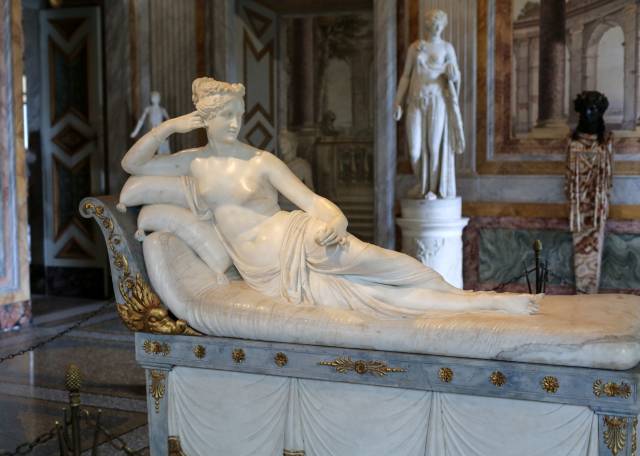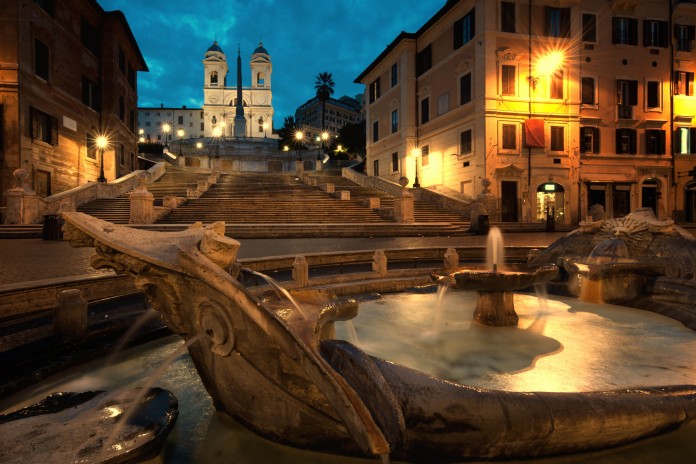If you ask to people which is the most famous fountain in the world, they will tell you that it is Trevi Fountain.
Scenic and majestic, you can feel its presence at the beginning of the street that lead to it: the noise of falling water in the tanks is mixed with the voices of tourists who are launching the famous “dime’s return to Rome.”
Inaugurated in 19 a. C. the Trevi Fountain was conceived by M. V. Agrippa and it is a unique example of ancient Roman aqueducts which always worked sincethe time of Augustus up to the present day. Its name is probably due to the presence of the intersection of three roads or triple water junction.
A brief history of the Trevi Fountain
In 1453 Pope Nicholas V started the aqueduct restoration work following the plans of Leon Battista Alberti and Bernardo Rossellini, architects of the Virgin waters. The name of the Virgin Water, according to legend, would have been given by Agrippa in memory of a young girl (virgo) that would have indicated the place of the springs to the soldiers who were looking for it. The architects built a design of the fountain decorated with coats of arms of the Pope and Roman people, under which the water emitted by three streams, gathered in a rectangular basin.
In 1640 Urbano VIII Barberini decided that the fountain had to change orientation and entrusted the project to Gian Lorenzo Bernini. The construction work, however, were limited to the installation of a base with a tank in front of which there were three pipe unions. In 1732 Clemente XII Corsini organized a competition for the adjustment of the Trevi Fountain in which took part the most important artists of the time. Among the projects of the architect Nicola Salvi, the Pope preferred the more monumental . Salvi with great competence and professionalism was in charge for the construction work from 1732 until 1752, the year of his death, with his good friend Luigi Vanvitelli.
What does the Trevi Fountain represent?
The central part of the Trevi Fountain façade is developed as a triumphal arch, with a deep niche and Corinthian columns. At the center there is a large inscription that recalls the construction of the fountain commissioned by Pope Clemente XII whose portrait is at the top. Four big statues of 1735 adorn the building itself and symbolize, from left, the fruits of Abundance by Agostino Corsini, the Fields Fertility by Bernardo Ludovisi, the Autumn Gifts of Francesco Queirolo and Amenity of fields by Bartolomeo Pincellotti.
In the large central niche there is a huge statue of Ocean that is driving a large shell-shaped chariot, pulled by two winged sea horses, one angry and the other one peaceful, conducted by one young triton and one mature symbolizing the different features of nature and man’s age.
The sides of the large niche exhibit statues of Healthiness and Abundance by Filippo Della Valle, and the reliefs depicting the Virgin showing the source by the soldiers of Grossi, and Agrippa agree that the construction of the aqueduct of Bergondi. The official opening of the Trevi Fountain was on May 22 of 1762.
Curiosity about Trevi Fountain
The beautiful and surprising bath in the Trevi Fountain of Anita Ekberg with an evening dress in the movie “La Dolce Vita” made it famous worldwide. But how could we forget Toto in the movie Tototruffa who tries to sell it to a tourist? Each year the City of Rome earn from these coins about 600 thousand Euros, for Caritas Solidarity projects.

Where: Piazza di Trevi
How to get there: Subway line A, stop “Piazza di Spagna” or “Barberini”, then walk a little in direction of Piazza di Trevi.
When: always
Ticket: free entrance























